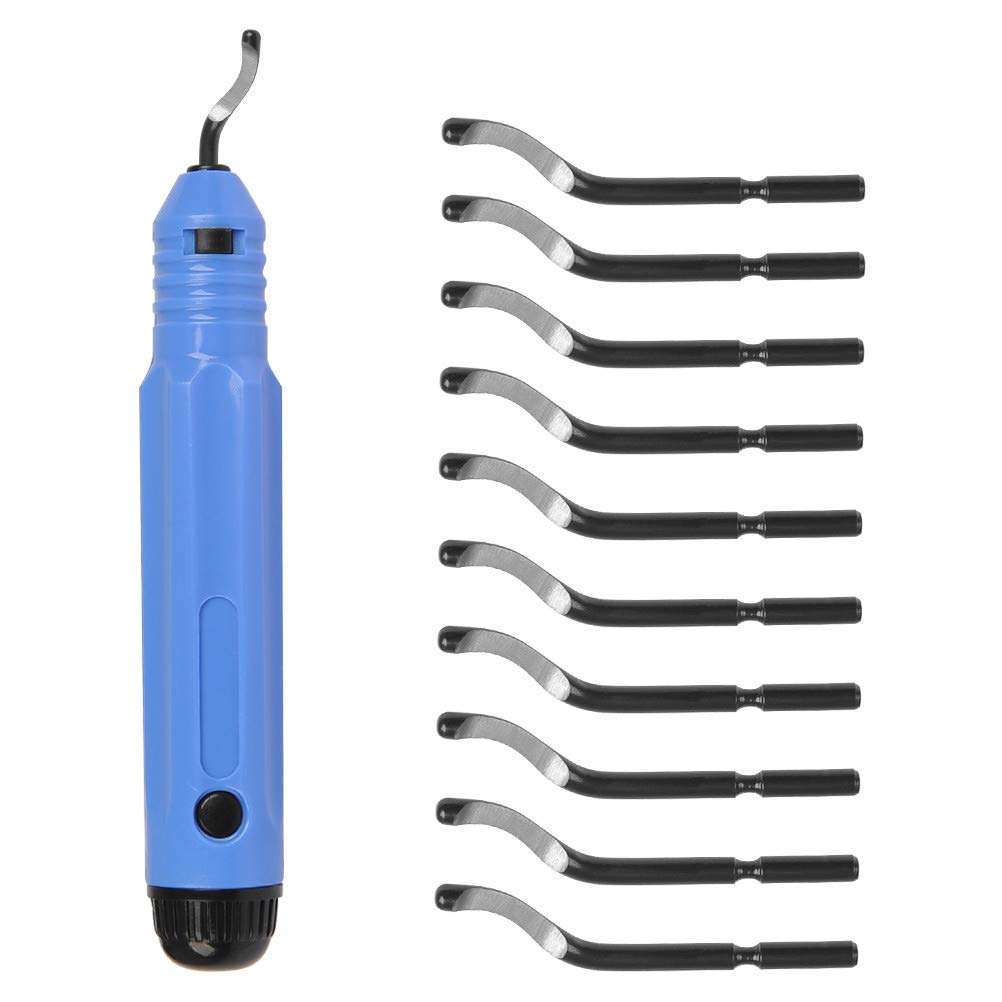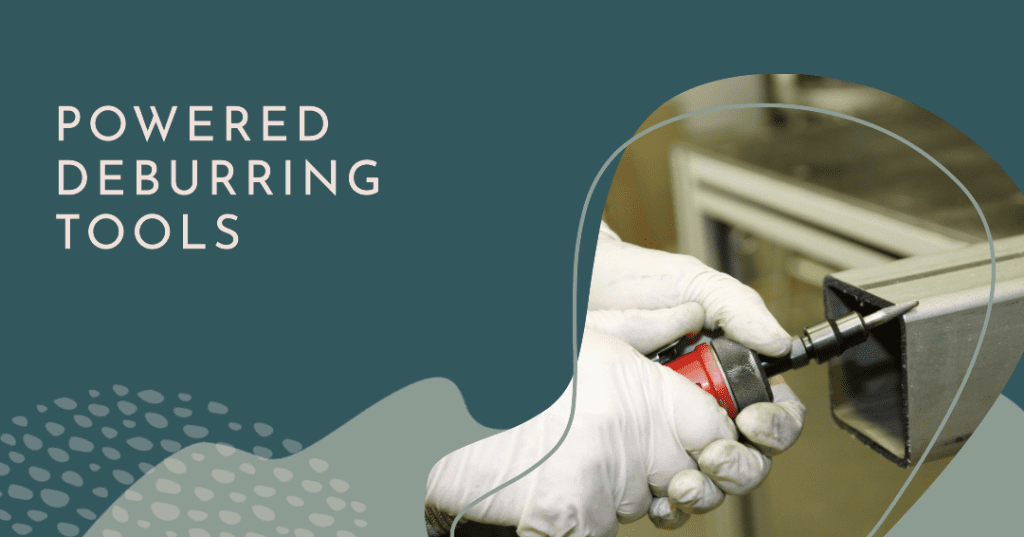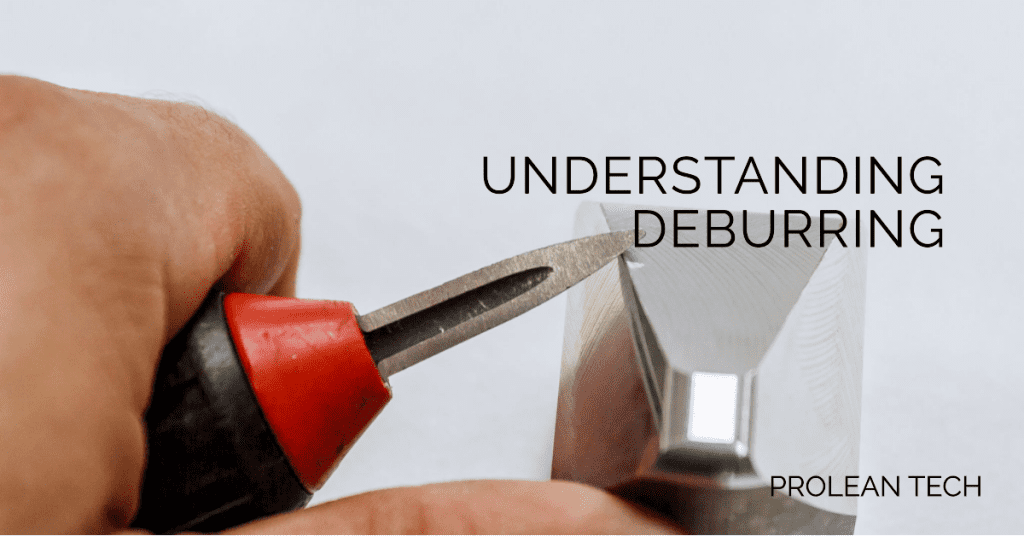In the world of manufacturing, quality and precision are paramount. One critical step that ensures these standards is deburring. But what is a deburrer, and why is deburring important? This article will shed light on these questions and delve into the different types of deburring tools and processes, along with the best ways to deburr metals, particularly aluminum.
Deburring: A Necessity in Manufacturing
What is a Deburrer?
A deburrer, or deburring tool, is a device used in the manufacturing industry to remove burrs—unwanted, rough, or sharp edges that occur after cutting or machining a workpiece. This process enhances the quality and safety of the final product.
Why Deburring is Important
Deburring is more than just an aesthetic procedure; it significantly impacts the functionality and lifespan of a part. Here’s why it’s so crucial:
- Safety: Burrs can pose a safety risk as they can cause cuts or injuries. Removing them minimizes these hazards.
- Performance: Burrs can interfere with the part fitting correctly, affecting the overall product performance.
- Longevity: By eliminating potential points of weakness, deburring can increase the life expectancy of parts.
Unveiling the Types of Deburring Tools and Processes
Manual Deburring Tools

These are simple handheld tools equipped with a sharp cutting edge. They require physical force to remove burrs and are often used for simple applications or smaller parts.
Deburring Wheels

Deburring wheels are typically used with a grinding or rotary machine. They are made of abrasive materials and are highly effective for finishing operations, including deburring larger or flat surfaces.
Powered Deburring Tools

Powered deburring tools can be either pneumatic or electric. These tools provide more power and precision, making them suitable for larger jobs or more complex parts.
Best Way to Deburr Aluminum
Aluminum, with its malleability and lightweight, is often used in manufacturing. However, it can form burrs when cut or machined. The best way to deburr aluminum involves using a deburring tool or wheel, ensuring gentle, consistent pressure to prevent damaging the aluminum piece.
Deburring: Key to Quality Metal Works
How to Deburr Metal
Deburring metal involves several steps:
- Start by choosing the right deburring tool for the metal type.
- Apply the tool to the burr edge, using light, consistent pressure.
- Ensure all burrs are removed by inspecting the part visually and by touch.
- Repeat the process if necessary.
Debur Metal: Ensuring Excellence (H3)
By properly deburring metal parts, manufacturers can ensure the highest quality in their products. This procedure not only enhances the appearance of the part but also optimizes its performance and durability.
The Challenges of Deburring
Deburring is a critical step in many manufacturing processes because burrs can affect the performance, safety, and aesthetics of a finished product. However, the deburring process presents several challenges:
| Challenge | Description |
|---|---|
| Variability of Burrs | Burrs vary in shape, size, and hardness based on the material and manufacturing process. This complexity makes it difficult to create universal deburring solutions. |
| Complex Geometries | Parts that need deburring often have complex geometries and hard-to-reach areas. This requires specialized tools and techniques. |
| Time and Cost | Deburring can be time-consuming and costly, especially for intricate parts or when high precision is required. |
| Quality Control | Ensuring all burrs are completely removed can be challenging, especially with complex parts. Missed burrs can cause equipment failure or safety issues. |
| Environmental and Health Concerns | Some deburring processes generate hazardous waste or expose workers to dangerous conditions, such as those involving grinding or chemical use. |
| Technological Limitations | While there have been advancements in automated deburring, handling complex parts or identifying all types of burrs can be challenging. Often, manual deburring is still necessary. |
| Material Considerations | Different materials react differently to deburring processes. Some may be prone to damage or deformation, while others might not generate burrs in the same way. |
Overcoming Deburring Challenges: Advanced Deburring Technologies
Overcoming the challenges associated with deburring requires the implementation of advanced technologies. Here’s a summary of some of the key technologies that are increasingly being used to meet these challenges:
- Robotic Deburring: This involves the use of robots to automate the deburring process. Robotic deburring systems can be programmed to handle a wide range of parts and burr types. They can also reach difficult areas and ensure consistent quality. However, they may require significant upfront investment and technical expertise to set up and maintain.
- High-Pressure Water Jet Deburring: This method uses a high-pressure jet of water to remove burrs. It’s especially effective for parts with complex geometries because the water can reach areas that other methods can’t. It’s also environmentally friendly because it doesn’t generate hazardous waste.
- Electrochemical Deburring: This process uses electricity and a specially-formulated electrolyte solution to remove burrs. It’s highly precise and can be used for parts with complex shapes. However, it requires careful handling due to the use of chemicals.
- Ultrasonic Deburring: Ultrasonic deburring uses high-frequency vibrations to remove burrs. This method is precise and can handle complex shapes, but it may not be suitable for all materials.
Ensuring Safety in the Deburring Process
Ensuring safety during the deburring process is crucial to protect workers from potential hazards. Here are some safety measures that can be implemented:
- Proper Training: Workers should be adequately trained on how to safely operate deburring equipment. They should understand the risks associated with the process and know how to mitigate them. This includes training on how to handle hazardous materials, if applicable.
- Use of Personal Protective Equipment (PPE): Workers should wear appropriate PPE, such as safety glasses, gloves, and protective clothing, to protect against flying debris and other hazards. Depending on the deburring method used, additional PPE like face shields or respirators might be needed.
- Machine Guards: Deburring machines should be equipped with guards to protect workers from moving parts and flying debris. These guards should be regularly inspected to ensure they are in good condition.
- Proper Ventilation: If the deburring process involves the use of chemicals or produces fumes, proper ventilation is essential. This helps to reduce the risk of exposure to harmful substances.
- Regular Maintenance: Regular maintenance of deburring machines can help prevent malfunctions that could lead to injuries. This includes regular inspections and prompt repairs.
- Ergonomics: The workspace should be designed ergonomically to prevent strain and repetitive motion injuries. This includes adjustable workstations, proper lighting, and tools designed to reduce strain.
- Safe Handling of Chemicals: If chemicals are used in the deburring process, they should be handled safely. This includes proper storage, use of PPE, and procedures for dealing with spills or exposures.
- Use of Automation: Automation can be used to reduce the need for workers to be in direct contact with the deburring process, thereby reducing exposure to potential hazards.
- Regular Safety Audits: Regular safety audits can help identify potential hazards and ensure that safety procedures are being followed.
Conclusion
Deburring is a vital process in the manufacturing industry, ensuring the safety, functionality, and longevity of the parts. With the right deburring tool, like a deburring wheel, and an understanding of the types of deburring processes, manufacturers can maintain the highest quality standards in their products.
FAQs
What is the main purpose of deburring?
The main purpose of deburring is to remove burrs—unwanted, rough, or sharp edges from a workpiece. This not only improves the aesthetics of the part but also enhances its safety, performance, and longevity.
What is an effective method for abrasive deburring?
Abrasive deburring often employs a deburring wheel or other abrasive tools. The effectiveness of the method depends on the hardness of the metal and the complexity of the part.
What’s the best way to deburr aluminum?
The best way to deburr aluminum involves using a deburring tool or wheel, and applying gentle and consistent pressure to prevent damaging the workpiece.
How does deburring contribute to the quality of metal works?
Deburring contributes significantly to the quality of metal works by eliminating rough and sharp edges. This not only improves the appearance of the piece but also ensures its safety, performance, and durability.
What are the different types of deburring processes?
Deburring processes vary depending on the material and the type of burr. They can include manual deburring with hand tools, mechanical deburring using machinery, thermal deburring, and abrasive deburring among others.





0 Comments